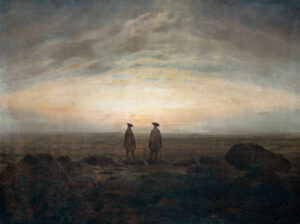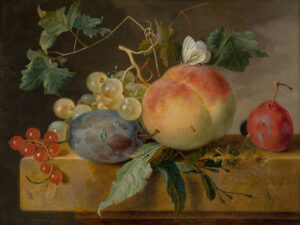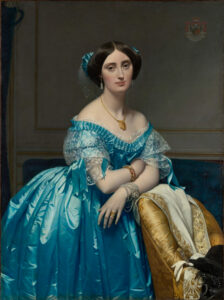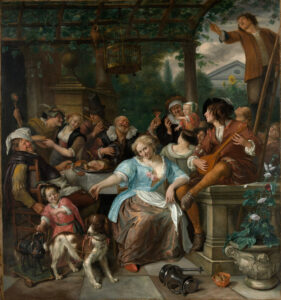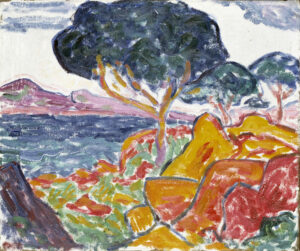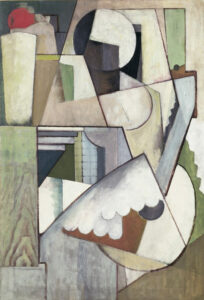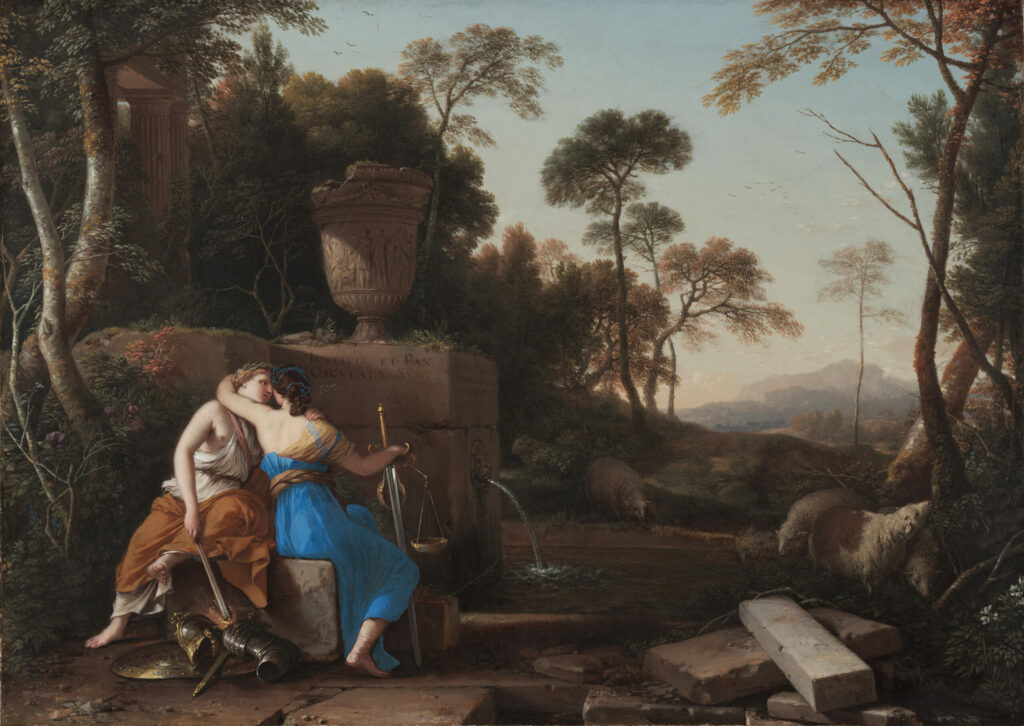
This 1654 allegory illustrates the reconciliation between Justice and Peace in an idyllic landscape. La Hyre represents these virtues as two embracing women near an antique fountain.
Justice, in blue, holds scales and sword, attributes of equity and punishment. Peace, draped in ochre, lays down the weapons of war, symbolizing the end of conflicts. The Latin inscription “Justitia et Pax osculatae sunt” (Psalm 85:10) adorns the monument, emphasizing the biblical inspiration. The pastoral landscape, with golden trees and grazing sheep, evokes restored harmony. This composition, painted at the end of the Fronde, conveys a subtle political message: the necessity of reconciling monarchical order and parliamentary justice. La Hyre’s refined technique blends influences from Poussin and Northern painting.
Further information
- The Kiss of Peace and Justice, by Laurent de La Hyre, 1654
- 54.9 x 76.2 cm (21 5/8 x 30 in.)
- The Cleveland Museum of Art, on view in 212, Baroque Painting and Sculpture
- https://www.clevelandart.org/art/1971.102
Major 17th-century Parisian painter Laurent de La Hyre (1606-1656) embodies the transition between late Mannerism and emerging Classicism. Trained in his father’s workshop, he developed a personal style without an Italian journey, extremely rare for the period. Influenced by prints after the masters, he assimilated Poussin’s lessons while maintaining a Northern sensibility inherited from Flemish primitives. A founding member of the Royal Academy (1648), he excelled in history painting, allegories, and landscapes. His work, marked by a clear palette and balanced composition, testifies to the emergence of a French art independent of Italian models, prefiguring the great achievements of Le Brun and Lebrun.

